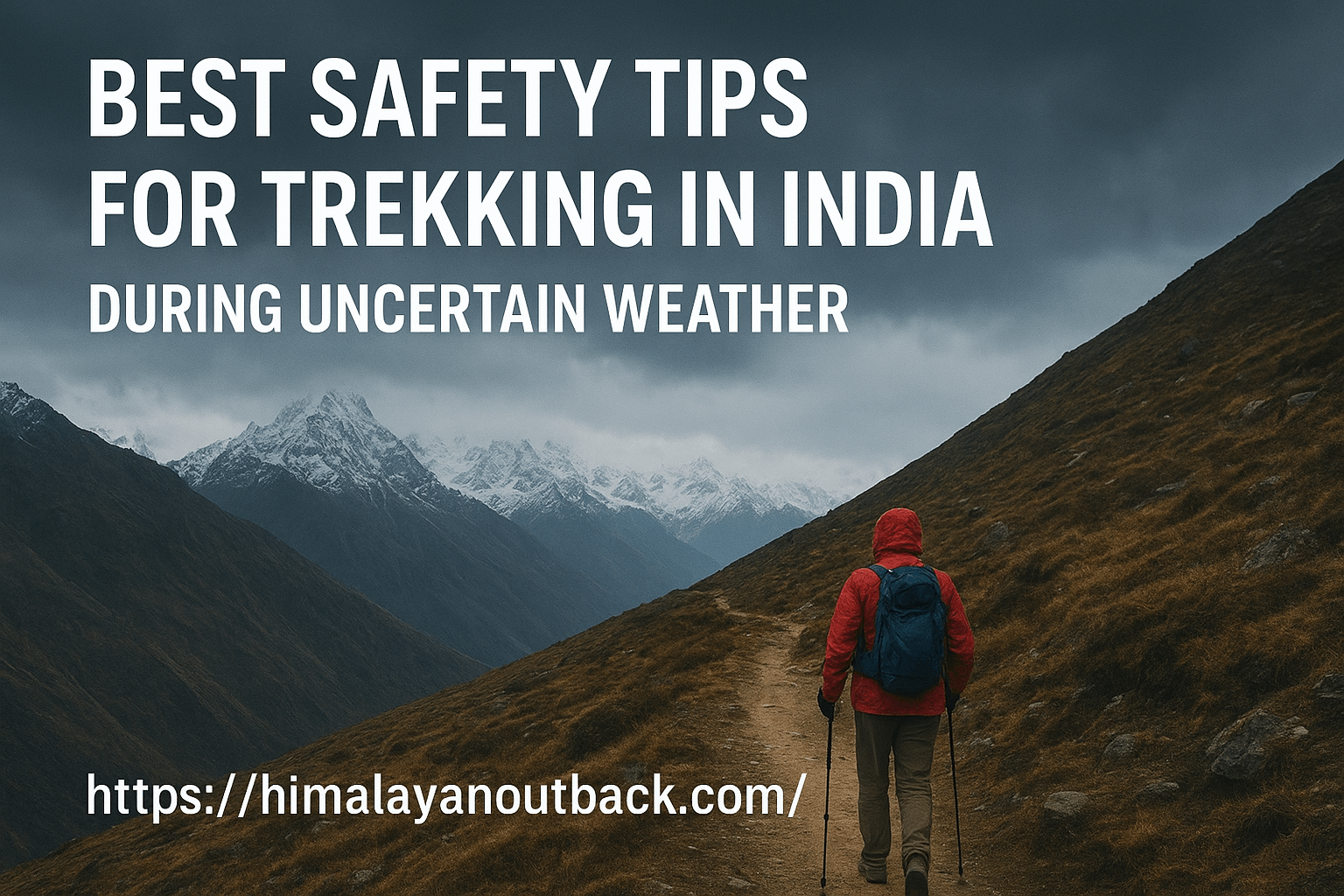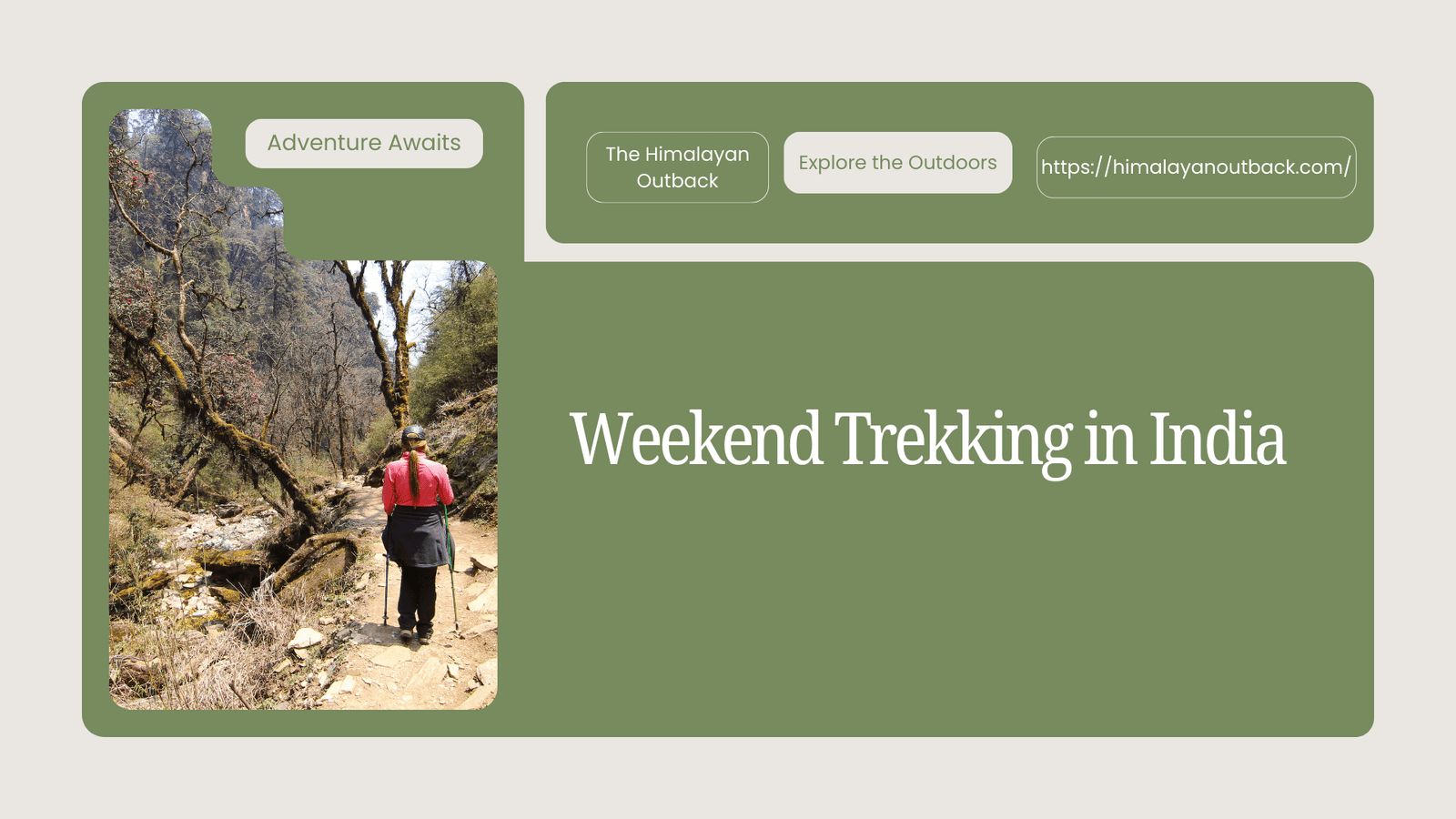Weather conditions in the Indian subcontinent can shift dramatically within hours, transforming a sunny morning trek into a treacherous afternoon adventure. From sudden monsoon downpours in the Western Ghats to unexpected snowstorms in the Himalayas, uncertain weather poses significant challenges for trekkers across India’s diverse terrain.
Understanding how to prepare for and respond to these unpredictable conditions can mean the difference between a memorable adventure and a dangerous situation. Whether you’re planning your first trek through the rhododendron forests of Sikkim or attempting a challenging high-altitude route in Uttarakhand, proper weather preparedness is essential for a safe and enjoyable experience.
This comprehensive guide covers the critical safety measures every trekker should implement when facing uncertain weather conditions while trekking in India. You’ll discover practical strategies for monitoring weather patterns, selecting appropriate gear, and making informed decisions that prioritize your safety without sacrificing the thrill of exploration.
Understanding India’s Diverse Weather Patterns
Himalayan Weather Challenges
The northern regions present unique weather challenges that can catch even experienced trekkers off guard. High-altitude areas experience rapid temperature fluctuations, with morning sunshine giving way to afternoon thunderstorms or sudden snow squalls. The monsoon season brings particular risks to popular routes like the Valley of Flowers trek and Roopkund trek, where visibility can drop to mere meters within minutes.
Temperature variations in the Himalayas can exceed 30 degrees Celsius between day and night, making layered clothing systems absolutely crucial. Above 4,000 meters, weather windows can close rapidly, leaving trekkers exposed to life-threatening conditions.
Western Ghats Weather Dynamics
The Western Ghats experience intense monsoon activity from June through September, with rainfall rates that can exceed 200mm in a single day. States like Kerala, Karnataka, and Maharashtra see their trekking trails transform into slippery, hazardous paths during these months.
Flash floods remain a constant threat in valley areas, while dense fog can obscure trail markers and cliff edges. Even during dry seasons, afternoon thunderstorms develop quickly over the ghats, creating dangerous lightning conditions for exposed ridgeline trekkers.
Northeastern Weather Variations
The northeastern states of India present their own set of weather challenges, with Sikkim and Arunachal Pradesh experiencing rapid weather changes due to their proximity to the Tibetan plateau. The region’s high humidity levels can make temperature perception unreliable, leading to inadequate clothing choices.
Sudden cloud formations can engulf entire valleys, making navigation extremely difficult. The area’s unique geography creates microclimates that can vary significantly over short distances, requiring constant vigilance from trekking parties.
Pre-Trek Weather Preparation
Advanced Weather Monitoring
Successful weather preparation begins weeks before your departure. Utilize multiple weather forecasting sources, including local meteorological departments, international weather services, and specialized mountain weather forecasts. The Indian Meteorological Department provides region-specific mountain weather bulletins that offer valuable insights into upcoming conditions.
Satellite weather imaging can reveal cloud formations and storm systems approaching your intended trekking area. Pay particular attention to precipitation forecasts, wind speeds, and temperature ranges for different elevations along your planned route.
Seasonal Timing Considerations
Each region has optimal trekking windows that minimize weather-related risks. For Himalayan treks, the pre-monsoon months of April through June and post-monsoon period of September through November generally offer the most stable conditions. However, these timeframes can shift due to climate variations.
Western Ghats trekking is safest during the dry months of October through March, though even these periods can experience unexpected weather events. Research historical weather patterns for your specific trekking area to understand typical seasonal variations and potential anomalies.
Essential Weather-Resistant Gear
Layered Clothing Systems
A proper layering system forms the foundation of weather protection during uncertain conditions. Your base layer should consist of moisture-wicking synthetic or merino wool materials that maintain insulation properties even when damp. Avoid cotton materials, which lose insulation value when wet and take excessive time to dry.
Your insulation layer might include lightweight down jackets for dry conditions or synthetic insulation for wet weather scenarios. The outer shell layer must provide both waterproof and windproof protection while maintaining breathability to prevent overheating during strenuous climbs.
Emergency Weather Equipment
Pack multiple emergency shelter options, including lightweight bivy sacks and emergency tarp systems. These can provide crucial protection if weather conditions prevent reaching planned campsites or require emergency stops.
Carry redundant navigation tools, including GPS devices, traditional compass and map combinations, and backup power sources for electronic equipment. Weather conditions that impair visibility make reliable navigation equipment essential for safety.
Communication Devices
Satellite communication devices become critical during severe weather events when cellular coverage may be unavailable. Personal locator beacons (PLBs) can summon rescue assistance when weather conditions create life-threatening situations.
Two-way radios enable communication within trekking groups when visibility decreases or parties become separated. Ensure all communication devices have adequate battery life and waterproof protection.
Real-Time Weather Assessment
Reading Natural Weather Signs
Developing skills in natural weather prediction can provide crucial early warnings when electronic forecasts are unavailable. Cloud formations, wind direction changes, and atmospheric pressure shifts offer valuable clues about approaching weather systems.
Lenticular clouds often indicate strong winds aloft, while rapidly building cumulus clouds suggest potential thunderstorm development. Temperature inversions, where higher elevations are warmer than lower areas, can signal approaching weather fronts.
Making Go/No-Go Decisions
Establish clear criteria for continuing or abandoning trek plans based on weather conditions. These decisions should consider factors including group experience levels, available equipment, and proximity to emergency evacuation routes.
Create specific weather thresholds for different aspects of your trek, such as maximum acceptable wind speeds for exposed ridges or minimum visibility requirements for technical terrain. Having predetermined criteria removes emotional decision-making from potentially dangerous situations.
Emergency Weather Protocols
Immediate Response Actions
When caught in rapidly deteriorating weather conditions, immediate actions can prevent minor situations from becoming major emergencies. Seek shelter immediately, even if it means stopping short of planned destinations. Hypothermia and heat-related illnesses can develop rapidly in changing weather conditions.
Establish communication with your base team or emergency contacts as soon as possible. Weather-related delays or route changes should be communicated promptly to prevent unnecessary search and rescue operations.
Group Management Strategies
Maintain close group cohesion during uncertain weather conditions. Assign specific roles to team members, including navigation responsibilities, weather monitoring duties, and group communication tasks. Regular headcounts and check-ins become essential when visibility decreases.
Implement buddy systems where team members pair up and remain responsible for monitoring each other’s condition throughout challenging weather events. This system helps identify early signs of weather-related health issues before they become serious problems.
Regional Safety Considerations
High-Altitude Weather Safety
Altitude adds complexity to weather challenges, as conditions can deteriorate more rapidly at higher elevations. Acclimatization schedules may need adjustment based on weather forecasts, as poor conditions can increase the risk of altitude-related illnesses.
Plan multiple bailout routes from high camps, as weather conditions may make primary descent routes impassable. Cache emergency supplies at strategic locations along ascent routes to support emergency descents during severe weather events.
Monsoon Season Precautions
Trekking during monsoon periods requires specialized preparation and equipment. Waterproof gear must be completely reliable, as partial protection can lead to hypothermia in tropical environments. Plan for longer travel times on wet trails and potential route modifications due to flooding.
Identify elevated camping areas that remain above potential flood levels. River crossings become particularly dangerous during monsoon conditions, requiring careful timing and potentially alternative crossing points.
Building Weather Awareness Skills
Developing comprehensive weather awareness requires ongoing education and practical experience. Participate in wilderness weather courses that teach meteorological principles specific to mountain environments. Practice weather prediction skills during day hikes and shorter treks before attempting longer expeditions.
Study post-trek weather reports to understand how actual conditions compared to forecasts. This analysis helps improve future weather interpretation skills and decision-making abilities. Connect with local guides and experienced trekkers who understand regional weather patterns and can share valuable insights about specific areas.
Weather-related accidents during trekking in India are largely preventable through proper preparation, appropriate equipment, and sound decision-making. The diverse climates and terrains across India’s trekking regions demand respect and careful planning. By implementing these comprehensive safety measures and maintaining constant weather awareness, you can pursue your trekking adventures while minimizing risks associated with uncertain weather conditions.
Remember that turning back due to weather concerns demonstrates wisdom, not weakness. The mountains will always be there for future attempts, but your safety depends on the decisions you make today. Invest in quality weather protection equipment, develop your meteorological knowledge, and never hesitate to prioritize safety over summit goals when conditions become questionable.






